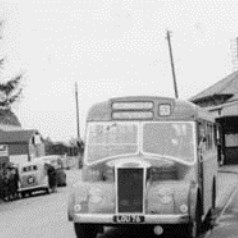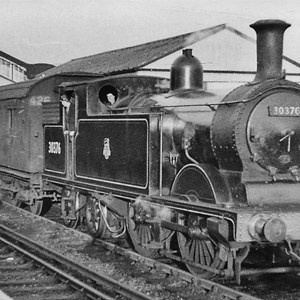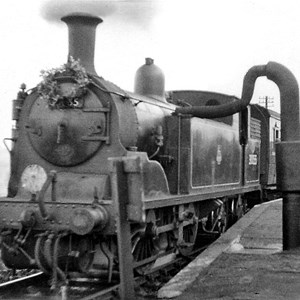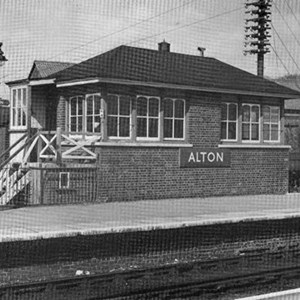History
The Railway Comes to Alton
The railway first reached Alton when it became the terminus of the London and South Western Railway's (LSWR) branch from Guildford. The branch first reached Farnham in 1845 and Alton on 28th July 1852, with all trains originating in Guildford. The route encompassed a now closed section of track that included stations for Ash Green and Tongham.
It wasn't until 1870 that the line from London arrived, taking a route from Woking, Brookwood, Ash Vale and Aldershot to link with the Guildford line just before Farnham. The Ordnance Survey plan of 1870 tells us that Alton station had an engine shed and turntable, and a six road goods yard with a goods shed and four wagon turntables. It also had a siding that finished behind the brick waiting shelter (where the future platform 3 would be located) with a road leading from Paper Mill Lane, presumably for loading horses and cattle. At this stage the waiting shelter opposite the station building is not shown and, of course, there is no footbridge. The later map of 1896 shows the aforementioned waiting shelter and the footbridge in its current location, but no other changes save for some extra pointwork at the north end of the station.
The 1937 map shows the track in platform 3, and a 7th goods yard track at the northern boundary provided with cattle pens. The engine shed seems to have been removed, but the engine turntable remains in situ. The Station Cafe building is not shown, but on platform 1 it shows the ex signal box cabin at the southern end (used by the Station Master) and identifies the signal box at the northern end. All three maps show the Station Master's house, formerly the station building, and now demolished and covered in a car park. The 1937 map also shows the location of the brick gents toilet building on platforms 2 & 3, later demolished by BR, but since replaced by the Mid-Hants Railway with a much nicer wooden building with a canopy.
The single line between Farnham and Alton was finally doubled in 1901, only to be singled again in 1985 by British Rail (BR) to reduce the costs of replacing the electric 3rd rail. This supposed money-saving exercise was an operational failure, leading BR to cancel its other planned line singling projects in the region. The route through Tongham ceased passenger services in 1937 and the branch closed in 1960. The southern half of this line is now occupied by the A31 between its junction with the A331 (Blackwater valley) and the Shepherd & Flock roundabout near Farnham. Although it was a shorter route to Guildford, it was a duplication of lines and the route via Aldershot is perfectly suitable, although sadly Alton no longer has direct train services to Guildford.
Moving further south, whilst the track was being doubled from Farnham to Alton, the Meon Valley Railway was being built and the contract included the doubling of the line between Alton station and Butts Junction. As you might expect, when brought into use in 1903 this new section of track was initially operated as a standard two-way double track, with an extra signal box at Butts Junction where the Meon Valley and Basingstoke lines diverged. However, the 1936 closure of the Basingstoke & Alton Light Railway (BALR) prompted the Southern Railway (SR) to close the Butts Junction signal box and remove the junction pointwork. However, they retained a manually-operated set of points so that the very short section of the BALR to Alton Park station could be used as a siding for delivery of coal to Lord Mayor Treloar's Hospital, only being removed in 1960. In 1937 the Meon Valley junction points were relocated to the north end of Alton Station, meaning that the double track between there and the former Butts Junction was operated as two bi-directional single lines laid in parallel.
Find out more about the history surrounding Alton's railways on the following pages:
HISTORY Page Index
Introduction: The Railway Comes to Alton
Footbridge History
The Ladies of Alton
Mid-Hants Railway
Basingstoke & Alton Light Railway
Meon Valley Railway
Longmoor Military Railway
Bentley & Bordon Light Railway
Click on these links, or use the drop-down menu above to navigate between the pages.



